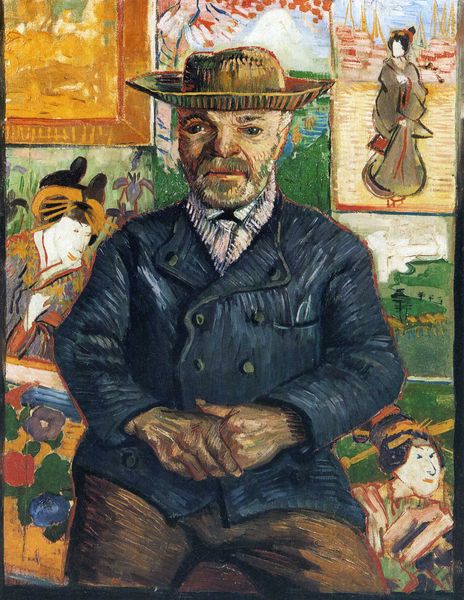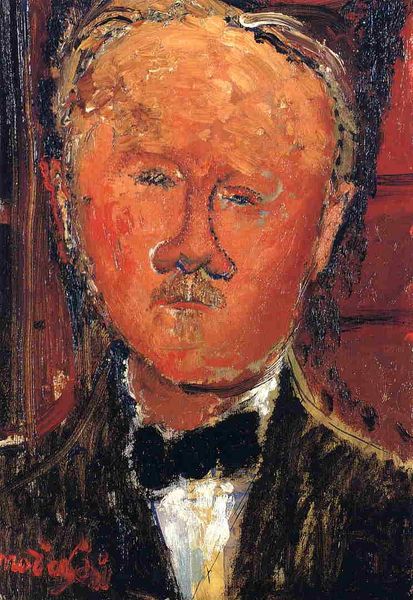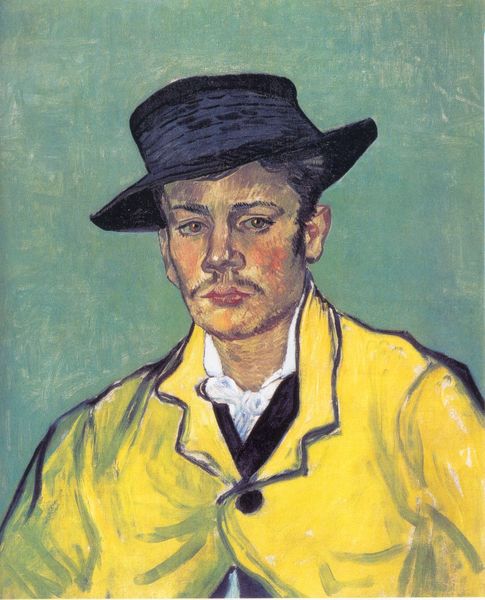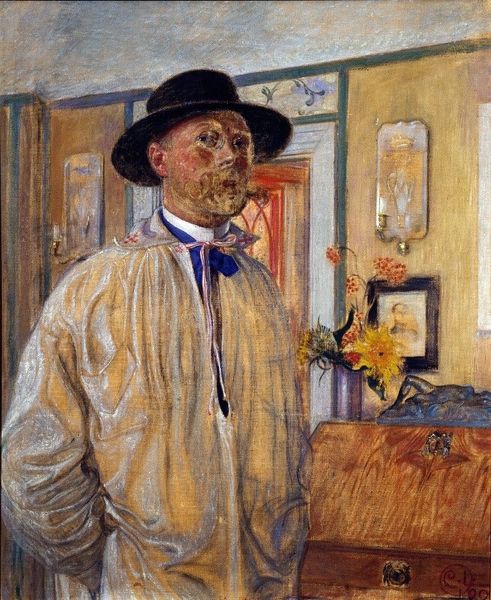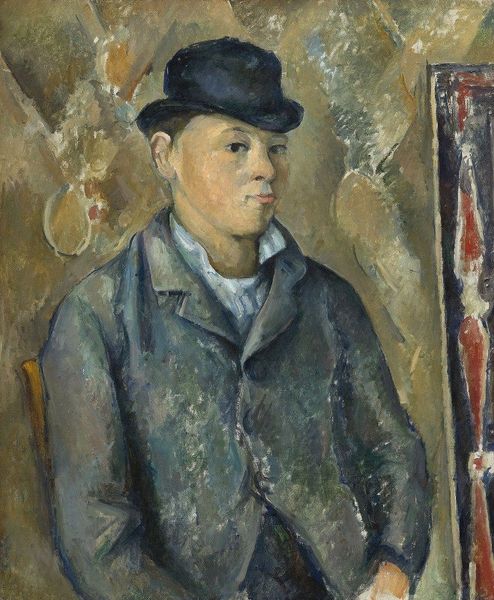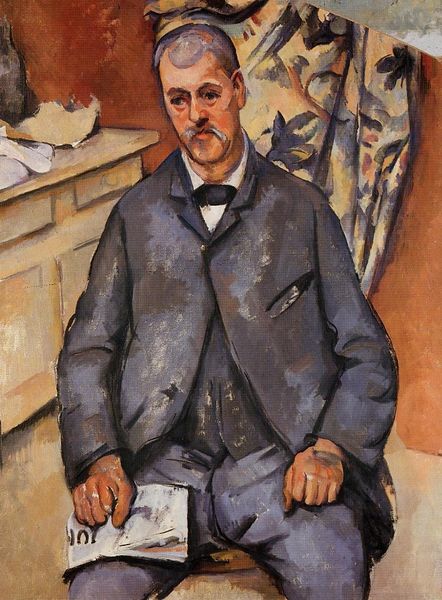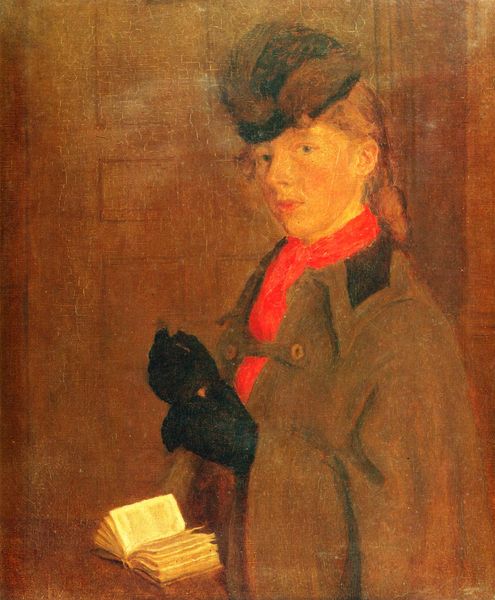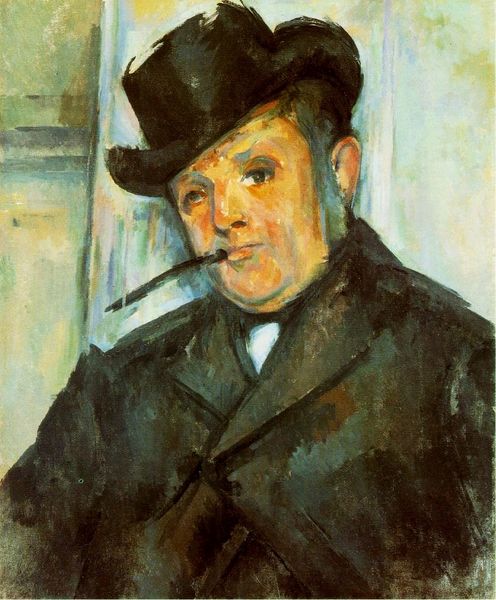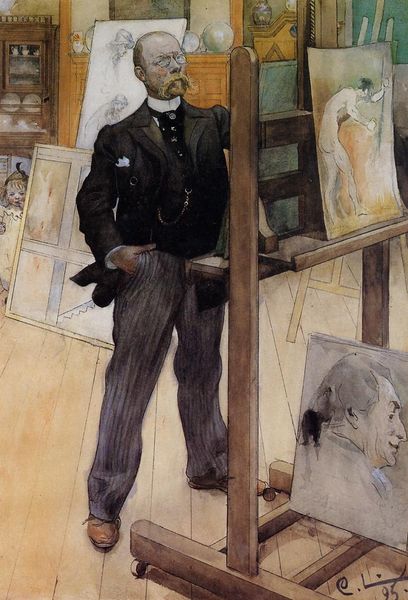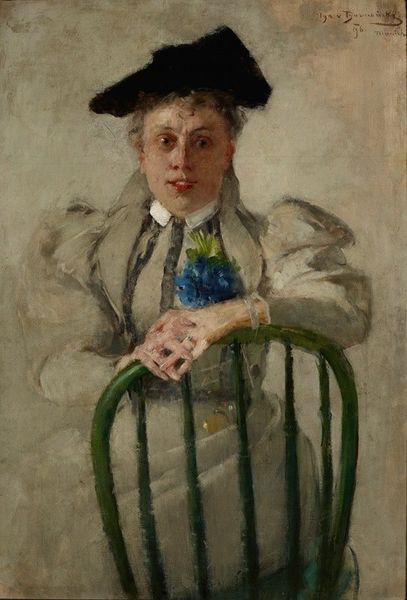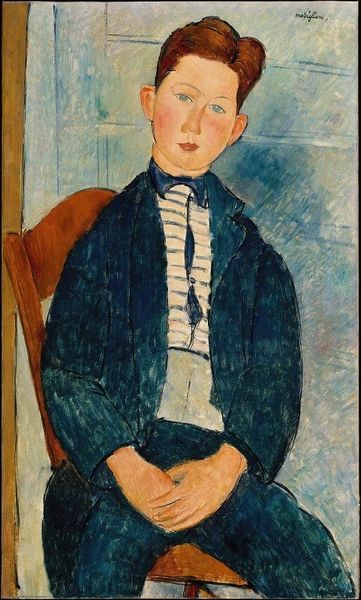
painting, oil-paint
#
portrait
#
self-portrait
#
painting
#
oil-paint
#
oil painting
#
intimism
#
symbolism
Copyright: Public domain
Editor: Here we have Carl Larsson's "Self-Recognition," painted in 1906. It's an oil painting and, honestly, the first thing that strikes me is the slightly unsettling contrast between Larsson's self-portrait and the puppet he's holding. What do you see in this piece, especially concerning its materiality? Curator: For me, this work is fascinating because it throws into sharp relief the constructed nature of artistic identity, something too often presented as inherently profound. Look at the materials – oil paint, canvas, even the garments depicted. These are all commodities, objects of production that intersect with Larsson's social position. Editor: That’s interesting. So you're focusing on the economic and material factors involved? Curator: Precisely. The labor involved in producing these materials, the commerce that circulates them. Even Larsson’s choice of clothing is significant – that artist’s smock isn’t just a practical garment; it's a signifier of a particular kind of creative work. How does that reading shift when juxtaposed against this curious puppet figure, a decidedly low-brow figure and children’s entertainment? Editor: So, the "high art" of the self-portrait clashing with the “low art” of a child’s toy challenges those boundaries, and questions their worth? Curator: Exactly. This challenges what we consider high and low brow by implicating children's labor in contrast to that of Larsson himself as a supposedly great artist, as he quite literally holds the tool, material, or process of creative labour right in his hands. This forces the viewer to address this complex relationship and thus destabilizes a romantic interpretation of authorship and authenticity. Are we more impressed by a commodity? Editor: That's a perspective I hadn’t considered. I was initially caught up in the strangeness of the image, but now I see how the painting’s materials and context play a huge part in its meaning. It really gets me thinking about how we assign value to different kinds of making. Curator: Indeed, it prompts us to consider how class, labor, and social structures shape artistic creation. It's a good reminder that even the most personal expressions are shaped by the material conditions in which they are made.
Comments
No comments
Be the first to comment and join the conversation on the ultimate creative platform.
